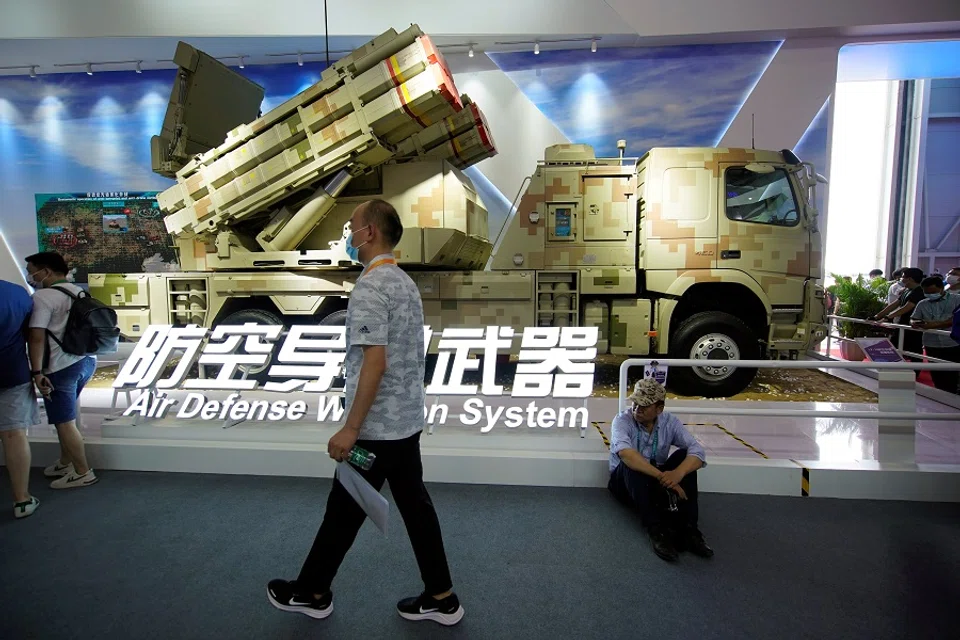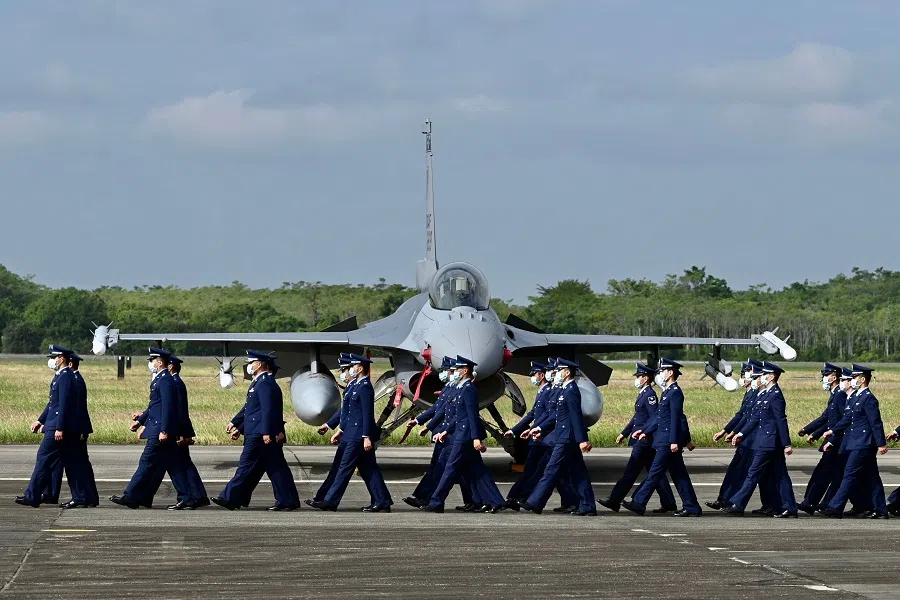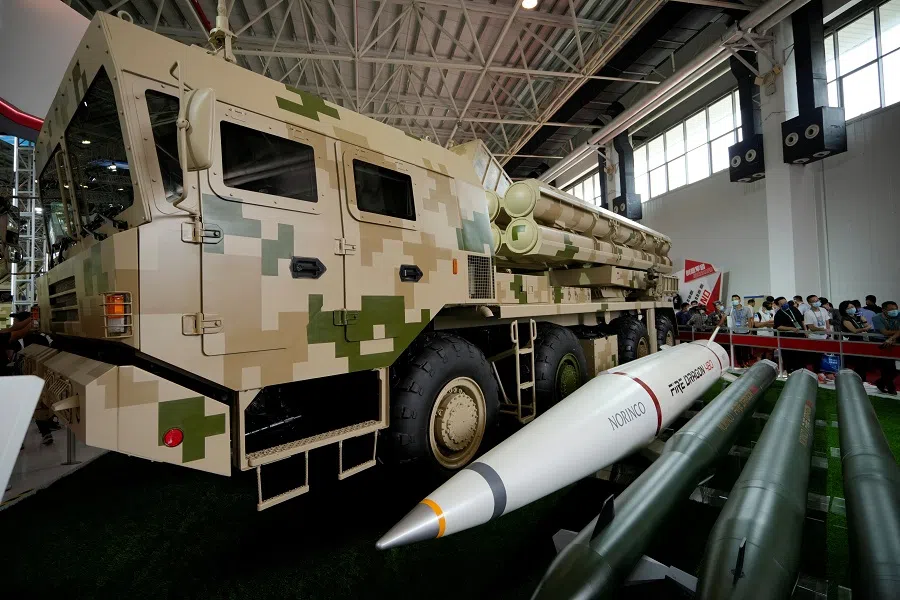Beyond a hypersonic missile: China's larger objectives
Amid recent reports of China testing a nuclear-capable hypersonic missile, Loro Horta says that gaining a tactical operational advantage is not an objective in itself. Rather, it is a tool with which a great power accomplishes its strategic objectives. What are China's strategic and political objectives in acquiring these capabilities and will we see another nuclear arms race?

In October several media outlets reported that China tested a nuclear-capable hypersonic missile. While the Chinese government denied that it did so saying it was just a routine spacecraft test, American officials were sceptical and believed that China did test one and that the missile could be nuclear-capable.
China has in recent years devoted significant resources to the development of hypersonic technologies. China has admitted to having deployed hypersonic cruise missiles and drones. In March 2021, Chinese sources claimed that Chinese scientists have found a way to land a hypersonic drone on an aircraft carrier. If such reports are accurate, China has indeed pushed ahead of the US in this vital area of modern warfare. To complicate matters, in the same month, a Pentagon report warned that China was rapidly expanding and modernising its nuclear arsenal.
Hypersonic missiles travel at more than five times the speed of sound and are more difficult to intercept than conventional missiles. Hypersonic missiles are not only much faster than conventional ones, but more manoeuvrable. A conventional intercontinental ballistic missile follows a ballistic trajectory to hit one or more targets. Only for a very short period of time is the weapon guided. This makes it much easier for missile defence systems to intercept it. Hypersonic glide missiles are faster and capable of changing course numerous times during their flight to target. Therefore, they are much harder to intercept.
It is clear that all major powers including the US, China and Russia are investing vast resources in hypersonic missiles and drones. The tactical operational benefits are quite obvious. More interesting is to understand the strategic and political objectives behind the development of such technologies. What are Beijing's motives in wanting to achieve such a tactical operational advantage?
Sharpening the nuclear sword
China's growing investment in hypersonic technologies and its nuclear buildup are motivated by one main factor, to deter the US from intervening in a conflict on China's periphery. Recent statements by Chinese officials and growing air and naval incursions near Taiwan indicate that Beijing's priority is Taiwan.
The test of the hypersonic missile in October fits the pattern of China's efforts at modernising its nuclear force and narrowing the gap with US nuclear forces.

According to the Pentagon's own estimates, China's nuclear warheads number in the low 200s. In contrast, the US possesses 1600 deployed nuclear warheads and another 2000 in storage. Ballistic missile submarines (SLBMs) are the ultimate deterrence weapon. SLBMs are difficult to locate and target and it is very hard to destroy several SLBMs in a surprise first strike, allowing one's opponent to retaliate. The US currently operates 14 SLBMS while China operates six. Most of China's nuclear missiles are based in land silos which are easier to locate and destroy.
In short, China's nuclear arsenal is small and vulnerable. As tensions with the US rise, Beijing sees such a weakness as unsustainable. Therefore, China is embarking on a strategy to modernise and expand its nuclear forces. More important than the increase in the number of Chinese warheads is the growing sophistication of its warheads and missiles. The People's Liberation Army Rocket Force (PLARF) is rapidly replacing its land-based silos for truck-mounted missiles. Mobile launchers are easier to conceal and relocate, making them much harder to target. The PLARF is also replacing liquid-fuelled missiles with solid-fuelled ones. This significantly reduces the missile's launching time. China has also made significant strides in developing missiles equipped with Multiple Independently Targeted Reentry Vehicle (MIRVs) warheads.
The test of the hypersonic missile in October fits the pattern of China's efforts at modernising its nuclear force and narrowing the gap with US nuclear forces. The speed and retargeting abilities of China's hypersonic missile allow it to target the US from numerous directions. The American Theatre Missile Defence (TMD) system is configured to defend threats from China and Russia emanating from the north Atlantic and the north Pacific. The recently tested Chinese hypersonic missile reportedly orbited the earth. It therefore could strike the US from the south or any other direction. US defences are not focused on countering threats from this direction. After all, no one is concerned in Washington over a missile attack by Nicaragua or Paraguay.
China's endgame
Several US officials have predicted that war with China over Taiwan could occur before the end of the decade. It is reasonable to assume that such conclusions on the part of US officials cause anxiety in Beijing and similar predictions for conflict in the near future.
In possession of a larger and modern nuclear arsenal China won't be so easy to blackmail.

The PLA is increasingly confident that it can take Taiwan by force and defeat American forces sent to assist the island. China has fielded thousands of missiles capable of striking at US bases in Japan and Guam. Its air defence network, modern warships, submarines and modern fighters will inflict devastation on any US relief force. In several simulation exercises carried out by the Pentagon, American forces were soundly defeated in their attempt at defending Taiwan. China's generals are confident that they can defeat the US in a conventional local war.
However, Beijing fears that if the war goes nuclear, China would be at a great disadvantage and therefore be open to American nuclear blackmail. Chinese leaders remember quite well American and Soviet threats to use nuclear weapons against China. During the Korean War, despite overwhelming technological superiority the US and its allies failed to prevail against the PLA. A frustrated General Douglas MacArthur was believed then to have wanted to request the use of nuclear weapons. During the 1969 Sino-Soviet war, Moscow threatened the use of nuclear weapons. Moscow backed down when President Richard Nixon warned that the US would unleash its own nuclear weapons on the Soviets. In possession of a larger and modern nuclear arsenal China won't be so easy to blackmail.
The US has recently increased its demands for China to be included in any arms reduction treaty between the US and Russia. The various Strategic Arms Limitation Talks (SALT) treaties signed between the Soviet Union and the US saw reductions of over 60% in the nuclear arsenal of both countries. The New Strategic Arms Reduction Treaty (New Start Treaty) was signed in 2011. However, Washington refuses to ratify the agreement again until China joins the treaty. However, Beijing refuses any arms reduction talks arguing that its arsenal is 17 times smaller than that of the US and Russia.
Human ability to learn from the mistakes of the past is rather limited. There is a great possibility that the world shall witness another nuclear arms race.

Therefore, China aims to expand and modernise its nuclear arsenal to negotiate from a stronger position. China has a "no first use" nuclear policy. Beijing hopes to reach parity with the US and demand that the US embraces a "no first use" nuclear policy in exchange for arms reductions.
This strategy is fraught with risk for it leaves the US with two options: embrace "no first use" or build up its nuclear arsenal to maintain nuclear deterrence against China. If it forgoes its "first strike" policy, it risks tempting China to a conventional showdown over Taiwan. If Washington and Beijing embark on a nuclear buildup, Moscow and New Delhi are likely to follow. The first three decades of the Cold War saw a massive buildup of nuclear arsenals. Human ability to learn from the mistakes of the past is rather limited. There is a great possibility that the world shall witness another nuclear arms race. Human ingenuity is limitless, but so is human stupidity. Let's hope our ingenious side prevails.
Related: Taiwan and Indo-Pacific are the primary targets of China's hypersonic glide vehicle | China displays its new weapons amid cross-strait tensions | Will a Biden-Xi virtual summit change anything? | Both sides of the Taiwan Strait fear imminent war | How is mainland China planning to achieve reunification with Taiwan, when a common history no longer holds the same significance? | Did PLA fire new missiles over Biden's statement on Taiwan?



![[Big read] China’s 10 trillion RMB debt clean-up falls short](https://cassette.sphdigital.com.sg/image/thinkchina/d08cfc72b13782693c25f2fcbf886fa7673723efca260881e7086211b082e66c)
![[Big read] Love is hard to find for millions of rural Chinese men](https://cassette.sphdigital.com.sg/image/thinkchina/16fb62fbcf055b710e38d7679f82264ad682ce8b45542008afeb14d369a94399)
